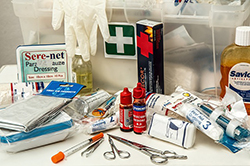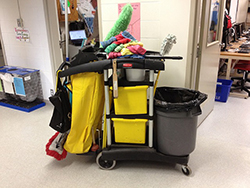 Completing your payroll in-house allows your company to save money. However, mistakes could increase your liability and jeopardize your business.
Completing your payroll in-house allows your company to save money. However, mistakes could increase your liability and jeopardize your business.
Identify common payroll mistakes and then fix them as you protect your company.
Employee Misclassification
Your business may hire non-traditional workers, including freelancers, consultants and independent contractors, to perform a variety of duties. These talented individuals provide an invaluable service as they multiply your workforce while saving your money.
Because you don’t have to pay taxes on independent contractors, you may classify regular employees in this category. You will face hefty fines, though, for this misclassification. Always be careful to label employees and non-traditional workers correctly.
Missing Records on File
For each employee, you must maintain accurate and detailed records. These records prove the identity of your employees and allow you to comply with various federal and state laws.
Ensure you store several documents for each employee, including their employment application, W-4, I-9 and pay stubs. Because guidelines vary, check the applicable laws to ensure you keep the right employment records on file.
Inaccurate Information on Pay Stubs
Data entry requires precision, and it’s easy to get in a hurry or accidentally hit the wrong letter or number on your keyboard. This mistake can cause you to include inaccurate information on pay stubs.
Pay stub inaccuracies can cause costly fines and penalties. Triple check that you have the correct data on each pay stub, including the employees’:
- Official full name
- Social Security number
- Payroll details such as hourly rate and hours worked
- All taxes, deductions and contributions
Delay Payroll Filing
You spend most of your time operating your small business and handle everything from hiring employees to customer service. Occasionally, you may be too busy to file your company payroll on time.
A delay in payroll filing affects your employees and business. Your employees will express displeasure, resulting in reduced motivation, goodwill and morale. Rushing can also cause you to make expensive mistakes. Plan time each week to prioritize payroll prep to keep your employees happy and to protect your business.
Complete Payroll by Hand
When you do your payroll by hand, you touch each timecard and calculate each salary. The personal touch may be okay when you’re first starting a business, but you could easily make mistakes and will face increasingly complex calculations as your company grows.
Consider automating your payroll process. Numerous reliable options decrease errors, could reduce payroll processing costs by 80 percent and give you more time to focus on running your business.
As you complete payroll for your employees, take care not to make these common mistakes. They increase your liability and could cause expensive fines and other costs.
 Auto insurance, it makes sense to purchase a Commercial Auto policy that provides the best long-term value for your premium dollar. To make sure that you’re getting the right policy at the right price follow these guidelines:
Auto insurance, it makes sense to purchase a Commercial Auto policy that provides the best long-term value for your premium dollar. To make sure that you’re getting the right policy at the right price follow these guidelines:
 How many times do you walk by fire extinguishers without checking those tags or past first aid kits without peeking inside to assure the contents are complete?
How many times do you walk by fire extinguishers without checking those tags or past first aid kits without peeking inside to assure the contents are complete? When settling Building Insurance claims, it can be tough to determine the real cost of replacing or restoring damaged property. Unfortunately, the methods that policyholders, insurance companies, and agents usually use to set the right amount of coverage all have their weaknesses; according to insurance experts, this means some buildings might be underinsured by up to 40%!
When settling Building Insurance claims, it can be tough to determine the real cost of replacing or restoring damaged property. Unfortunately, the methods that policyholders, insurance companies, and agents usually use to set the right amount of coverage all have their weaknesses; according to insurance experts, this means some buildings might be underinsured by up to 40%! Now that the harsh winter weather has ended, it’s time to spruce up your commercial property. Here are several spring maintenance tips that reduce your liability and prep your property for warmer weather.
Now that the harsh winter weather has ended, it’s time to spruce up your commercial property. Here are several spring maintenance tips that reduce your liability and prep your property for warmer weather. Completing your payroll in-house allows your company to save money. However, mistakes could increase your liability and jeopardize your business.
Completing your payroll in-house allows your company to save money. However, mistakes could increase your liability and jeopardize your business. Inclement weather, high winds and cold temperatures can wreak havoc on your business property and disrupt operations during the winter months.
Inclement weather, high winds and cold temperatures can wreak havoc on your business property and disrupt operations during the winter months. Small business tax return mistakes can vary from simple math miscalculations to huge deduction errors. While the tax preparer you hire will have liability insurance that covers his or her part in any filing mistakes, you must take several steps to correct the mistake and prevent your liability, too.
Small business tax return mistakes can vary from simple math miscalculations to huge deduction errors. While the tax preparer you hire will have liability insurance that covers his or her part in any filing mistakes, you must take several steps to correct the mistake and prevent your liability, too.




